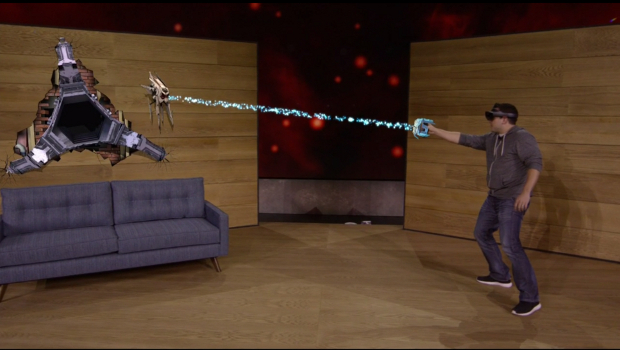Microsoft is giving HoloLens developers a better sense of what $3,000 will get them as the company looks to take pre-orders for its high-tech headset.
The HoloLens developer kit, which maps hologram-like images onto the real world through a transparent viewing window, will start shipping on 30 March. But instead of handing out the device to anyone who can pay for it, Microsoft is using an application process for developers in the United States or Canada, who must enroll in the Windows Insider programme and make a case for being part of the launch.
“The more you share in your application form, the easier it will be for us to see how you’ll help build the future of holographic computing with us, one inspired app at a time,” Microsoft said.
Microsoft also revealed the HoloLens dev kit’s battery life, which according to Microsoft will run for two to three hours of active use. Other tech specs include a custom 32-bit processor, 2Gb of RAM, 64Gb of storage, four environment-sensing cameras, one depth camera, four microphones, one ambient light sensor, and various sensors for measuring movement. The device also includes a 2MP photo and video camera, which lets users create standard videos that combine real-world and holographic images. A Bluetooth “clicker” for controlling the action will ship with the dev kit as well.
Although the point of the developer kit is to promote third party holographic apps, Microsoft is throwing in a few of its own to fuel the imagination. These include a HoloLens version of Skype, a crime thriller called Fragments that makes you hunt for clues amidst your own furniture, a platforming game starring Conker, and a first-person shooter called RoboRaid in which enemies blast through holes in the wall.
So far, Microsoft hasn’t given any details about a consumer launch for HoloLens, though last autumn Asus CEO Jonney Shih hinted that third party hardware makers might be able to produce their own holographic headsets eventually.
IDG News Service







Subscribers 0
Fans 0
Followers 0
Followers